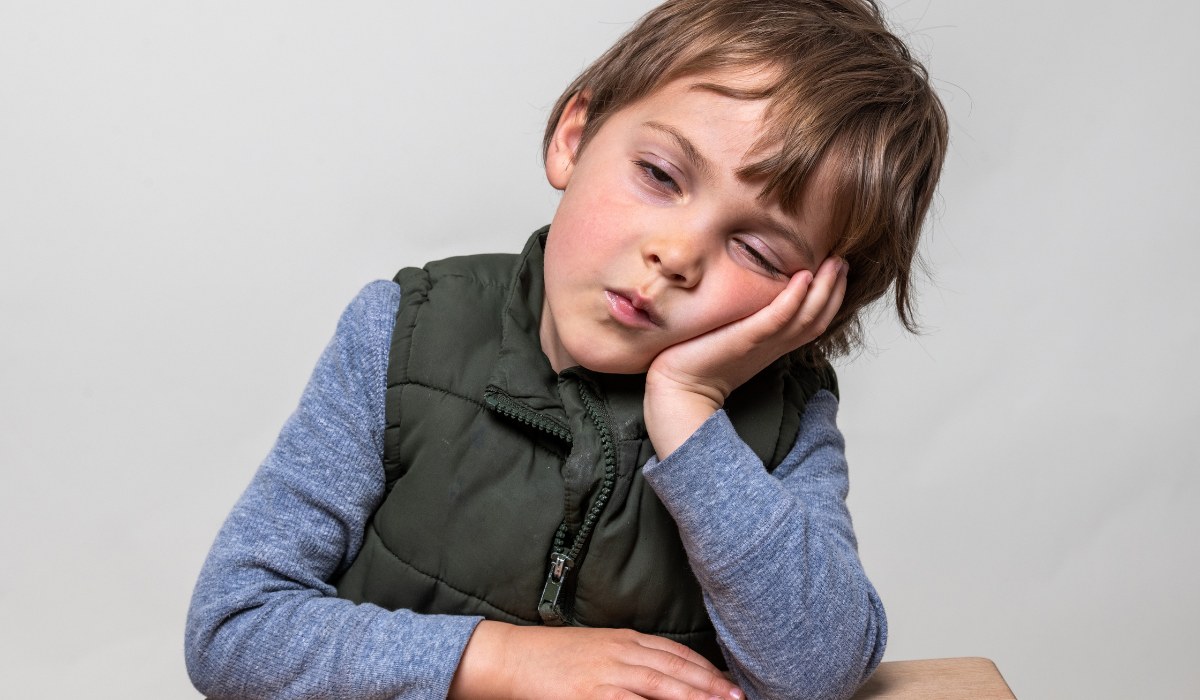Sensory Processing Disorder vs. Autism
Understanding Sensory Challenges: Differentiating SPD and Autism

Exploring the Complex Landscape of Sensory Processing
Sensory Processing Disorder (SPD) and Autism Spectrum Disorder (ASD) are conditions that often appear intertwined, mainly because of their shared sensory sensitivities and overlapping behaviors. However, understanding their distinctions, symptoms, and co-occurrence is critical for accurate diagnosis, effective intervention, and comprehensive care. This article delves into the neurological underpinnings, characteristic signs, diagnostic methods, and management strategies for both SPD and ASD, offering clarity on how these conditions relate and differ.
Defining Sensory Processing Disorder (SPD) and Autism Spectrum Disorder (ASD)

What is SPD?
Sensory Processing Disorder (SPD) involves how the brain interprets sensory information. Children with SPD may react strongly to sounds, textures, or movement, or fail to respond to stimuli altogether. This can lead to difficulties in balance, motor skills, and emotional regulation. Some children seek out sensory input compulsively, while others may withdraw or avoid certain stimuli. SPD manifests as hypersensitivity, hyposensitivity, or a mix of both, affecting daily routines and behaviors.
What is ASD?
Autism Spectrum Disorder (ASD), on the other hand, is a neurodevelopmental condition marked by challenges in social communication and the presence of repetitive, restricted behaviors. People with ASD also often have sensory processing differences, which can make them overreact to or ignore sensory stimuli like sounds and lights. These sensory issues are considered a core part of autism, influencing how individuals perceive their environment and interact socially.
Core features and characteristics of each condition
| Feature | SPD | ASD | Additional Details | |------------|--------------|--------------|------------------------| | Main focus | Sensory processing | Social communication and behaviors | SPD centers on sensory responses; ASD involves broader developmental challenges | | Sensory responses | Over- or under-reactive to stimuli | Over-reactive or under-reactive sensory responses, often accompanied by social difficulties | | Behavioral signs | Sensory seeking or avoidance | Repetitive behaviors, social difficulties | Both can share sensory sensitivities but ASD includes social and behavioral markers | | Diagnosis | Behavioral observation and sensory assessments | Behavioral criteria per DSM-5, developmental milestones | SPD diagnosis involves sensory tests; ASD involves developmental and behavioral analyses | | Treatment options | Sensory integration therapy, environmental modifications | Behavioral therapies, occupational therapy, social skills training | Interventions are tailored to individual needs in both conditions |
While SPD often occurs alongside ASD, not all children with SPD have autism. Understanding these distinctions helps ensure targeted support and management for each condition.
Prevalence and Comorbidity of SPD and ASD
 Sensory processing differences are common among children, with estimates suggesting that about 5% to 16% of children in the United States experience some form of Sensory Processing Disorder (SPD). This condition involves difficulties in how the brain detects, modulates, and interprets sensory signals from the environment, which can lead to behaviors like over-reactivity, under-reactivity, or sensory seeking.
Sensory processing differences are common among children, with estimates suggesting that about 5% to 16% of children in the United States experience some form of Sensory Processing Disorder (SPD). This condition involves difficulties in how the brain detects, modulates, and interprets sensory signals from the environment, which can lead to behaviors like over-reactivity, under-reactivity, or sensory seeking.
Autism Spectrum Disorder (ASD), on the other hand, affects approximately 1 in 54 children and is characterized by challenges in social communication, repetitive behaviors, and restricted interests. Yet, a significant overlap exists between ASD and SPD. Research shows that over 80% of children diagnosed with autism also have sensory processing difficulties, with some estimates indicating that up to 95% of autistic children experience sensory issues.
Despite this overlap, SPD and ASD are distinct conditions. Every child is unique, and sensory symptoms can vary widely within both groups. For example, many children with ASD display hypersensitivity to sounds, lights, or textures, which may cause distress or behavioral issues. Conversely, children with SPD but without autism also experience sensory challenges but do not necessarily exhibit the social or behavioral symptoms typical of ASD.
Understanding the differences can help in targeted intervention and support. While SPD involves difficulties primarily related to sensory modulation and responses, ASD includes social, communicative, and behavioral features, although sensory sensitivities are increasingly recognized as a core aspect of autism.
In summary, sensory processing challenges are not exclusive to autism. They can occur independently, making it essential for professionals to use comprehensive assessments to distinguish between SPD and ASD, while acknowledging their commonalities.
Neurological Foundations of SPD and ASD

How do sensory sensitivities differ between individuals with SPD and those with autism?
Sensory sensitivities in SPD mainly involve difficulties in detecting, modulating, and responding correctly to sensory inputs. This can manifest as hypersensitivity, where stimuli are overwhelming, or hyposensitivity, where stimuli are under-processed, leading to behaviors like withdrawal or seeking excessive sensory input.
In contrast, individuals with autism experience sensory sensitivities as part of broader neural and behavioral differences. Their sensitivities often coincide with challenges in social communication, repetitive behaviors, and atypical neural pathways.
While both groups may experience sensory overload, autism's sensory issues are integrated into a complex profile of brain connectivity and behavioral traits. For example, altered neural connectivity and impaired sensory gating contribute to greater sensory overload and atypical responses in autism.
Overall, SPD's sensory sensitivities are usually isolated to specific receptor or processing issues, whereas in autism, they are embedded within broader cognitive and social neural patterns.
What neural mechanisms underlie sensory processing differences?
Neuroscientific research highlights several mechanisms that contribute to sensory processing issues in both SPD and ASD.
First, alterations in neural connectivity are prominent. These changes can result in inefficient communication between brain regions responsible for processing sensory information, leading to either hypersensitivity or hyposensitivity.
Sensory gating dysfunction is another significant factor. This mechanism involves the brain’s ability to filter out irrelevant or repetitive stimuli. In ASD, impaired sensory gating often leads to overload and difficulty focusing, making the environment overwhelming.
An imbalance between neural excitation and inhibition (E/I balance) also plays a crucial role. Too much excitation or inadequate inhibitory control in neural circuits heightens sensory sensitivities, contributing to hyper-reactive responses to stimuli.
Furthermore, atypical multisensory integration—how the brain combines inputs from different senses—is often disrupted. This affects how individuals perceive and interpret complex sensory environments, influencing social interactions and cognitive functions.
In summary, the underlying neural issues involve disrupted connectivity, gating failures, and excitatory-inhibitory imbalances, forming the basis for the sensory differences seen in SPD and ASD.
Behavioral Signs and Diagnosis of SPD and ASD

What are the typical signs and symptoms of sensory processing disorder and autism?
Sensory Processing Disorder (SPD) and Autism Spectrum Disorder (ASD) share some overlapping characteristics, especially related to sensory sensitivities. SPD signs include difficulties in detecting, interpreting, and reacting appropriately to sensory stimuli. Children with SPD may exhibit sensory under-responsiveness, such as seeming indifferent or daydreaming, or over-responsiveness, which manifests as exaggerated reactions or avoidance of stimuli like loud sounds or certain textures. They might also display sensory seeking behaviors, such as touching objects excessively or crashing into things to seek input.
Autism features challenges in social interaction, repetitive behaviors, and restricted interests. Sensory sensitivities in autistic children often include hypersensitivity to sounds, textures, lights, or smells, which can lead to sensory overload. Both SPD and ASD can cause behaviors like withdrawal, aggression, or avoidance to manage overwhelming sensory experiences.
While these conditions can look similar due to sensory responses, ASD also involves persistent social communication difficulties and stereotyped behaviors that are less characteristic of SPD.
How is SPD diagnosed?
Diagnosing SPD involves a comprehensive evaluation by trained professionals, such as occupational therapists. The process includes behavioral observations and standardized assessments like the Sensory Integration and Praxis Tests (SIPT) and the Sensory Profile Measure (SPM). Since SPD is not officially recognized as a separate medical disorder in diagnostic manuals like the DSM-5, there is no single medical test for detection.
Professionals analyze a child's sensory responses over time, considering developmental history and behavioral patterns. An assessment focuses on how the brain processes sensory information, looking for signs of sensory modulation difficulties, poor sensory discrimination, or sensory seeking behaviors.
Early diagnosis, although not always definitive, can help in developing targeted interventions, such as sensory integration therapy. Despite the lack of formal recognition, awareness of sensory issues in children provides valuable guidance for managing their daily challenges and fostering development.
Interventions and Management Strategies
 Addressing sensory processing challenges in children with SPD and ASD involves various approaches tailored to individual needs. Sensory integration therapy (SIT) is a common intervention that uses playful, hands-on activities to help children better process sensory information and improve motor responses. These activities often involve swinging, jumping, or tactile play, designed to promote adaptive responses within the nervous system.
Addressing sensory processing challenges in children with SPD and ASD involves various approaches tailored to individual needs. Sensory integration therapy (SIT) is a common intervention that uses playful, hands-on activities to help children better process sensory information and improve motor responses. These activities often involve swinging, jumping, or tactile play, designed to promote adaptive responses within the nervous system.
Creating a sensory-friendly environment is another essential strategy. This includes reducing overly stimulating elements like bright lights or loud noises and incorporating calm, soothing features such as weighted blankets, soft lighting, and quiet zones. Environmental modifications aim to minimize sensory overload, helping children feel safer and more in control.
Assistive technologies also play a role in managing sensory sensitivities. Items like sensory toys, noise-canceling headphones, or communication devices can aid children in coping better during daily routines and social interactions. These tools support participation and independence, especially in settings with unpredictable sensory stimuli.
When experiencing sensory overload, calming techniques are crucial. Using sensory tools such as textured objects or calming scents can help soothe the nervous system. Deep breaths, including rectangle box breathing, or progressive muscle relaxation can activate the body's relaxation response. Additionally, creating a peaceful space with blackout curtains or white noise can provide an immediate reprieve from overstimulation. Routine activities like stretching, listening to calming music, or gentle yoga further contribute to regaining emotional equilibrium.
Professionals like occupational therapists customize these interventions, ensuring strategies are age-appropriate and aligned with each child's sensory profile. Combining sensory integration, environmental adjustments, and technological support offers a comprehensive approach to improving quality of life for children with SPD and ASD. Recognizing and implementing these methods early can significantly impact their ability to navigate sensory worlds more comfortably.
Educational and Caregiver Support Tips
Supporting individuals with sensory processing challenges requires thoughtful strategies tailored to their unique needs. In educational settings, inclusion begins with creating sensory-friendly environments. This can involve designated quiet zones, visual schedules, and consistent routines that reduce unpredictability, helping children feel safe and understood. Incorporating sensory breaks and adjustable lighting or seating options further supports focus and reduces overwhelm.
For parents and caregivers, patience and empathy are essential. Understanding that sensory sensitivities are neurological rather than behavioral helps foster a supportive environment. Professional guidance from occupational therapists can provide customized sensory strategies that promote regulation and participation. Simple environmental modifications at home, like dimming lights or using noise-canceling headphones, can make daily activities more manageable.
Building awareness about sensory needs is crucial for everyone involved. Educating teachers, caregivers, and family members about the differences in sensory sensitivities between children with SPD and those with autism can improve responses. For example, sensory sensitivities in SPD are mainly related to processing and reaction to stimuli, while in autism, they are part of a broader pattern involving social and behavioral challenges.
Support strategies that promote inclusion include clear communication, patience, and creating predictable, soothing environments. Using visual supports and offering sensory options helps children and adults participate comfortably and confidently.
By fostering understanding and employing practical environmental and behavioral strategies, caregivers and educators can significantly improve the daily lives and social participation of individuals with sensory processing challenges.
Conclusion and Future Directions
Why is early detection important for SPD and autism?
Early identification of both sensory processing disorder (SPD) and autism spectrum disorder (ASD) significantly influences intervention success and long-term outcomes. Detecting signs of SPD, such as sensory under- or over-responsiveness, during preschool years enables timely management through occupational therapy and environmental adjustments. Similarly, early diagnosis of ASD, based on behavioral criteria like communication difficulties and repetitive behaviors, allows for early intervention programs that improve social skills and adaptive behaviors.
In children with both conditions, early detection can help mitigate sensory overload, reduce behaviors like meltdowns, and support their participation in daily activities. Professionals, including pediatricians, psychologists, and occupational therapists, use behavioral observations and standardized assessments—such as the Sensory Integration Praxis Test (SIPT) and the Sensory Profile—to identify sensory issues. For autism, developmental milestones and behavioral evaluations guide diagnosis, while SPD assessments focus on sensory integration and discrimination problems.
What is the future outlook for understanding and managing SPD and autism?
Advancements in neuroimaging, genetic research, and behavioral studies continue to deepen our understanding of the complexities in SPD and ASD. Innovative therapies aim to target neural mechanisms more precisely, promoting better sensory processing and social functioning. Technologies like assistive devices, virtual reality environments, and personalized sensory interventions are emerging as promising management tools.
Neural mechanisms involved include sensory gating dysfunctions and imbalances between sensory excitation and inhibition (E/I imbalance), which research aims to modulate through tailored interventions. Sensory integration therapy (SIT), environmental modifications, and assistive technology continue to be refined, with ongoing studies enhancing their effectiveness.
Furthermore, raising awareness among healthcare professionals, educators, and families is vital. This fosters early recognition and supportive environments that promote inclusion and individual growth. As our knowledge advances, personalized and adaptive management strategies are expected to become standard, improving quality of life for both autistic individuals and those with SPD.
Why is comprehensive knowledge important for caregivers and educators?
Understanding the differences and overlaps between SPD and ASD empowers caregivers and educators to support individuals effectively. Precise knowledge helps distinguish sensory processing issues from core autism behaviors, leading to targeted interventions and reducing frustration for children.
Targeted support that considers a child's unique sensory profile can reduce sensory overload, emotional distress, and behavioral challenges. It also informs the creation of sensory-friendly environments, such as quiet zones or optimized lighting, that foster comfort and engagement.
Educators equipped with this understanding can implement inclusive strategies like clear instructions, visual supports, and consistent routines, promoting better participation. Caregivers, in turn, can apply empathetic approaches, advocate for necessary resources, and collaborate with professionals for tailored interventions.
Ultimately, a comprehensive understanding fosters a nurturing setting that helps individuals achieve their potentials and improves their emotional and social well-being.
| Aspect | Focus | Description |
|---|---|---|
| Early detection | Significance | Enables timely therapeutic interventions |
| Future outlook | Innovations | Neuroimaging, technology, personalized therapies |
| Caregiver/educator knowledge | Impact | Supports targeted care, promotes inclusion |
By prioritizing early recognition, embracing technological and scientific innovations, and cultivating informed caregiving practices, progress in managing SPD and autism continues to grow. These efforts pave the way for more inclusive, effective, and compassionate support systems in the years ahead.
Empowering Knowledge for Better Support
Recognizing the nuances between Sensory Processing Disorder and Autism Spectrum Disorder is essential for effective intervention and support. While they share sensory sensitivities and often coexist, their core differences influence diagnosis, treatment, and everyday care strategies. Continued research, early identification, and tailored therapies improve quality of life for affected individuals. Equipping caregivers and educators with comprehensive understanding fosters inclusive environments where sensory differences are acknowledged and accommodated, ultimately enabling everyone to thrive.
References
- Sensory Processing Disorder vs. Autism: What's the Difference?
- Sensory processing disorder vs. autism: Differences explained
- Sensory Processing Differences in Individuals With Autism Spectrum ...
- Sensory processing disorder (SPD) - Autism Speaks
- Sensory Processing Disorder vs Autism: What's the Difference? - AT4K
- Sensory differences - a guide for all audiences
- Sensory Processing Disorder vs Autism: What's the Difference?
- Autism (ASD) and sensory issues - signs to look for an how to help
- Sensory processing disorder vs. autism: Differences explained
- Sensory differences - a guide for all audiences
Does Your Child Have An Autism Diagnosis?
Learn More About How ABA Therapy Can Help
Find More Articles
Contact us
North Carolina, Nevada, Utah, Virginia
New Hampshire, Maine
Arizona, Colorado, Georgia, New Mexico, Oklahoma, Texas
.avif)




































































































